
Franschhoek is located on the other side of Stellenbosch, approximately 75 km from from Cape Town. The region is perhaps SA’s most beautiful with its mountains and dramatic views.
Name translates “French Corner”, as the valley was originally settled by French Huguenot refugees. Franschhoek is famous for its eateries, and have some of the country’s best restaurants within its quiet borders.
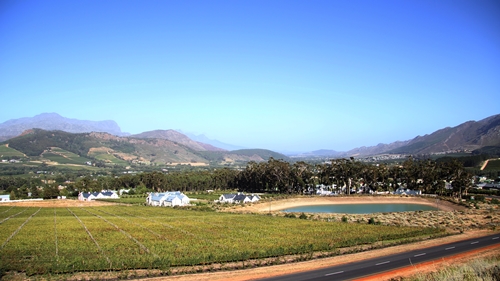
The Theewaterskloofdam keeps the region irrigated, and the cooling winds even enables some wineries to dry farm their vineyards.
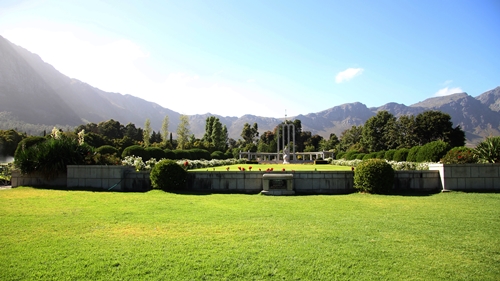
The Huguenot Monument, is found on the town’s southern borders and it was build to honour the region’s heritage.
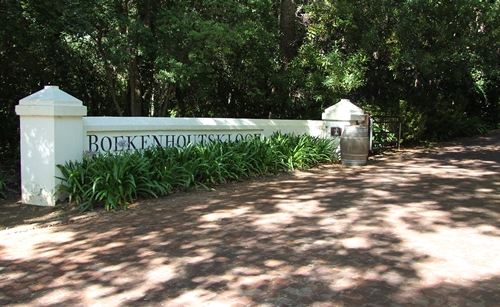
In the south western corner of Franschhoek we find Boekenhoutskloof.
It might be regarded a small winery with only 20 hectares of vines. Their chief winemaker Marc Kent is though a true visionaire and he has developed Syrahs and Cabernets of worldclass.
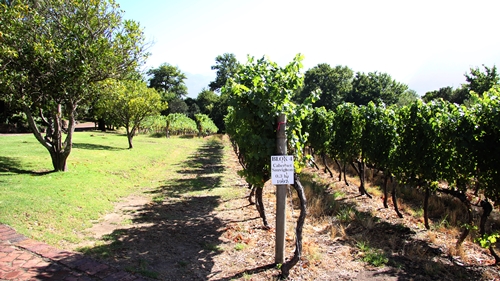
Their top wines are made from the hillside vineyards surrounding their winery in Franschhoek. These are divided in blocks, as the captured 0.3 hectare block of Cabernet Sauvignon from 1997.
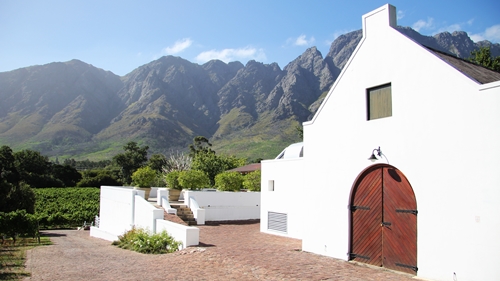
Being a narrow valley results in a close proximity to the surrounding mountains.
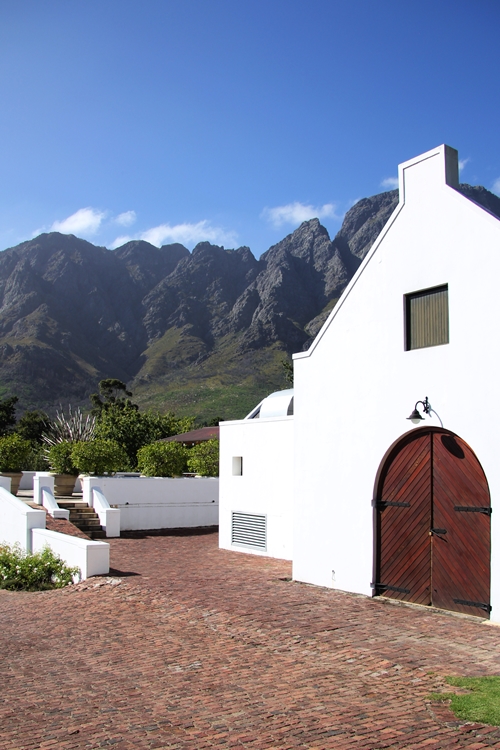
Positioned incredibly close to the mountain.
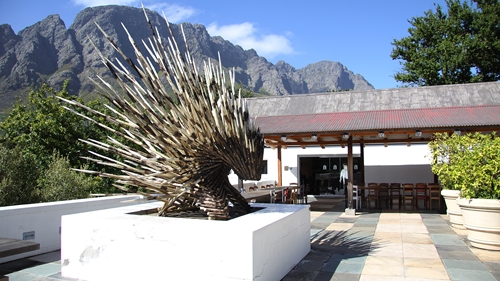
The original Porcupine sculpture on the terrace, represents their Porcupine Ridge Range.
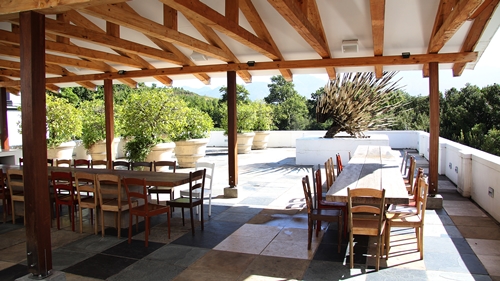
Their charming terrace set-up.
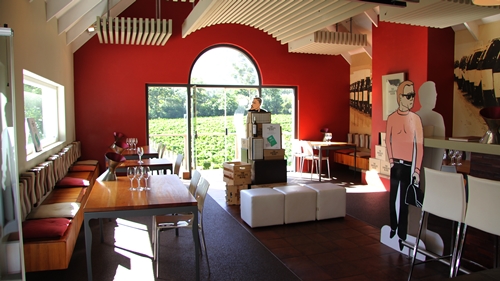
Inside their Cellar Door you are not cheated from their stunning views.
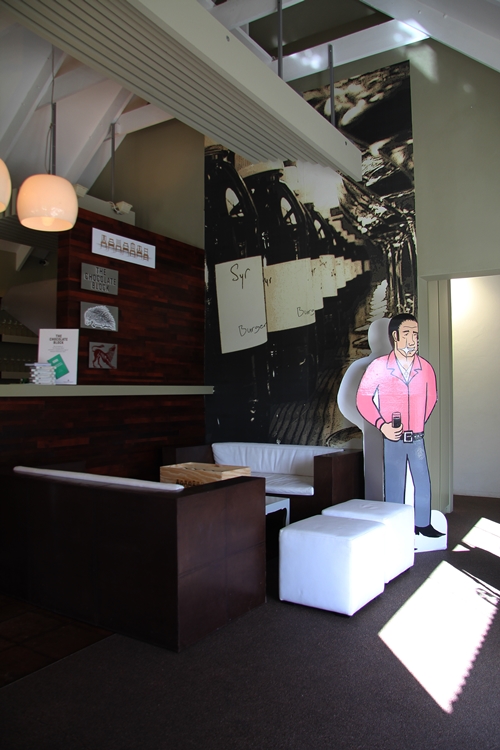
South Africans have a great sense of humour, and even though Boekenhoutskloof produce some of SA’s finest Syrah, the atmosphere should not be too serious. The idea is to make you feel relaxed, comfortable and ready to have a laugh.
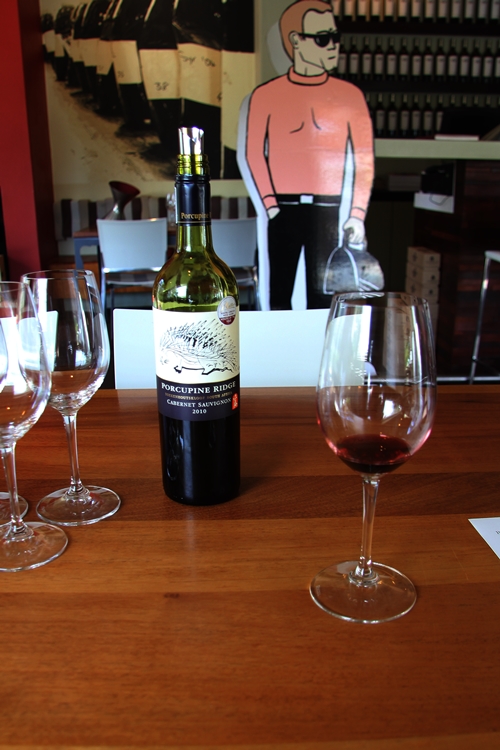
Release their wines through the ranges; Wolftrap, Porcupine Ridge, Le Cap Maritime, Chocolate Block and Boekenhoutskloof.
The Wolftrap is the introductional range with a rosé, as well as a white and a red blend, both inspired by the blends made in Rhône, France. Fruit comes from Cape South Coast (white) and Swartland (red).
The Porcupine Ridge range also includes a Sauvignon Blanc, a Merlot, a Cab (here captured from 2010) and a Syrah.
These sport excellent value, yet they are more lean and fresh in their style compared to their big brothers.
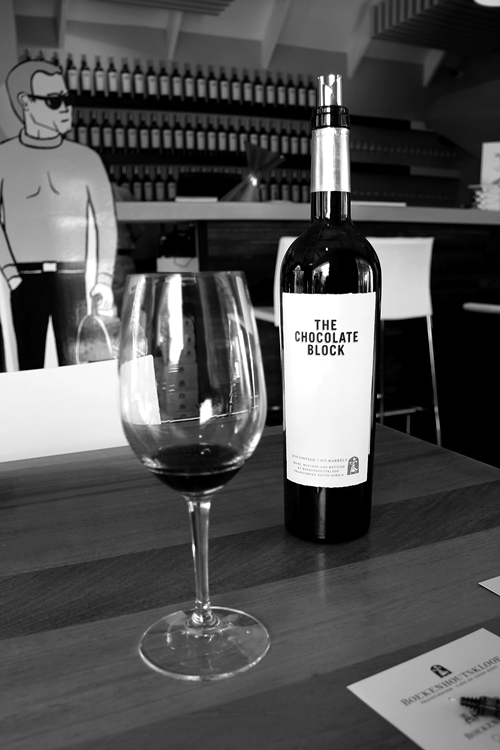
Chocolate Block is a real pleaser, and 2005 was the first vintage of this original blend.
Marc Kent blends the cultivars Syrah, Granache Noir, Cabernet Sauvignon, Cinsault and Viognier from the individually best suited sites in SA.
His blend changes from vintage to vintage, reflecting the year and the advanced winemaking that goes into making the complicated blend. The vines are a combination of trellised and bush vines, and they are spread across Swartland, Wellington and Franschhoek.
The 2010 Chocolate Block is composed of 72% Syrah, 13% Cabernet Sauvignon, 7% Granache Noir, 6% Cinsault, and 2% Viognier.
The chosen sites for this year’s blend comes from Malmesbury, Swartland (dryfarmed Syrah), Piekenierskloof (Granache Noir, barrel fermented in large 600L casks to highlight its fruit), Wellington (Cinsault planted to bush vines) and Franschhoek (organically farmed Cabernet and Viognier).
2010 was a brilliant vintage in SA, and the blend has an intoxicating perfume as well as beautiful texture. It is a dense and rich wine, yet still extremely elegant with multiple well-integrated-layers, and it goes down dangerously easy.

The Boekenhoutskloof range holds their flagship wines. The wines have gained them international fame, and they are really extraordinary. The wines are made from their finest fruit from their own organically farmed vineyards in Franschhoek and from selected blocks of Syrah in Wellington.
It hosts a Semillon (made from old bush vines planted on the riverbed in 1902 and 1942),
a Cabernet Sauvignon (of two different clones and with small quantities of Cabernet Franc added, aged 27 months on new French oak)
and a 100% Syrah (from unique blocks in Wellington, aged 27 months on 2nd filled oak barrels).
The name is derived from kloof meaning mountain pass, and Boekenhout, an indigenous Cape Beech tree, that is often used to make furniture of. Their Boekenhoutskloof label features seven chairs, and it pays tribute to the skills of the 18th century craftsmen and their achievements in creating beauty from natural sources, just as they pursuit creating beauty through the fine craftsmanship of wine-making.
The Syrah is especially remarkable! Here the 2009 vintage. It is an elegant one – filled with aromas of white pepper, spicy floral notes of violets, and mineral undertones of wet gravel. Concentrated, dense and extremely clean in its expression.
Marc has since my visit made a new Icon of Syrah from their newly purchased Porseleinberg vineyard in Swartland. It follows some of the processing and winemaking first used by Chapoutier; like wild yeast fermentation in both 2500L oak casks and the egg-shaped concrete tanks. A wine I look forward to try!


 follow & get in touch
follow & get in touch



